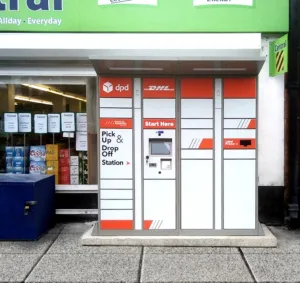By Sam Holding, Head of International, SparkPost
We’ve all heard critics and technology journalists, time and again attempt to forecast the death of email. But they couldn’t be further from the truth – the numbers don’t lie, and email is well and truly here to stay, and is still a highly valuable, effective and profitable marketing tool to the brands that choose to pay attention and give it a chance to shine.
The value that email brings to today’s retailers, especially those relying solely on ecommerce sales, is not just its effectiveness as a delivery channel but also valuable analytics that allow brands to keep a close eye on engagement and inboxing rates. After the incredible rise in online shopping over the past year, now is the time for ecommerce retailers to step up, and realise just how important email is as a form of marketing and communication with new and existing customers.
A thorough understanding of customers
If retail brands leverage their emails properly, they have the potential to gain a highly engaged customer base and strong ROI – for every £1 spent, brands could expect to see a £35.41 return, according to a recent report from the Data and Marketing Association (DMA). And to add to that, 53% of consumers surveyed by SparkPost reported that they ‘always’ or ‘usually’ open emails from brands when it includes information about a product.
Email allows ecommerce brands to thoroughly understand engagement with the customers, gain deep insights into the success of their email campaigns, including delivery rate and engagement, while serving up real-time data and analytics to monitor bounce rates, spam traps, and ISP responses to determine whether emails are arriving at their intended destination. Delays or delivery failures can lead to revenue loss or customer churn, particularly if transactional emails are going astray.
Of course, all communication and advertising channels come with their own metrics for success, but those that underpin email marketing require deep knowledge and finesse of deliverability best practices. The metrics used to measure email echo the unique nature of the medium itself, one that is not owned by any one entity and requires those who receive messages to be opted in to a brands’ mailstreams.
Highly targeted customer engagement
Unlike almost every other communication and advertising channel, email does not require brands to “pay-to-play”. Ad platforms run by tech giants such as Facebook and Google follow a more traditional advertising paradigm, one in which advertisers must pay money to reach their audience. The companies that own these platforms are arguably more motivated to accommodate advertisers, to create a feedback loop in which brands continue to pay in response to the positive results they are seeing from reaching an audience that they otherwise may not be able to target.
The email channel turns this advertiser-brand relationship on it’s head, as companies can only reach opted-in recipients via email. In fact unlike other advertising platforms that can increase audience reach, with email, there are many protections in place to make it so that brands can’t reach anyone who hasn’t explicitly stated they would like to engage with that brand. This set-up allows brands to gauge interest and engagement across those who are already presumably interested in their brand. Perhaps this is why 60% of practitioners agree email is a main source of revenue for their organisation– because brands are able to drive more ROI from people who have an active interest in their company rather than targeting a broad swath of people they think might have an interest in their brand.
Don’t ignore the metrics
Aside from engagement metrics that can help marketers track the success of their campaigns, email also comes with a set of more technical metrics that require constant monitoring. Because the opportunity to communicate with and garner more ROI from opted-in customers is so great, the opportunity to “get it wrong” is also quite high. This isn’t meant to deter from engaging with customers via email, but rather encourage brands to invest in technology that can help them track bounce rates, spam traps, and ISP responses to determine whether emails are arriving at their intended destination.
These metrics simply don’t apply to the aforementioned traditional digital advertising platforms, so investing in technology like SparkPost’s Inbox Tracker which tracks and alerts users in real time is an ideal tool for any marketing stack. Understanding if emails are getting to an opted-in audience is a crucial step in making email the workhorse it can and should be.
Don’t be fooled by the critics – the email channel presents just as many unique challenges as it does great opportunities. Email marketing is a key component in the marketing stack as organisations of all types have leaned heavily on the communication channel to educate, inform, engage and transact. If this year has taught us anything, it is that effective digital communication is crucial, in all aspects of life, but particularly when it comes to communicating with customers.
While email isn’t easy, understanding the value of reaching an already engaged audience as well as the importance of deliverability success metrics lays a great foundation for a bulletproof email program. The very nature of email as a marketing channel makes it incredibly lucrative, all that’s left to do is invest in email marketing professionals and technologies that can help unlock the real potential that your email marketing has to offer.







